Glycine (Food Additive) Overview
One of amino acids containing proteins, Glycine has been used as a food additive for seasoning and preservation. Glycine occurs widely in nature, with seafood such as prawn, sea urchin, gives a pleasant umami taste for food.
Resonac Glycine has the same characteristic flavor as natural glycine, with more stable shape and quality.
As it gives mild sweetness and savory taste, it can be applied to many food processing, either savory or sweet menus. Moreover, it also mellows bitterness, saltiness and sourness, so the food will be milder in taste.
For health benefit, Glycine motivates antioxidation in food and prevent growth of microbial activity which helps prolong shelf life of the foods.
Application
As it gives mild sweetness than sucrose, it can be put in recipe as a sweetener. Together with savory taste, it can be applied to many food processing for both savory and sweet recipes
Moreover, it also softens bitterness, saltiness and sourness, so the food getting milder in taste and texture, which known as “umami” taste.
Benefits and Application
| Sweetener | Glycine has a light sweet taste, with an intensity of 70% sweetness of Sucrose. |
|---|---|
| Palatable Taste | Glycine is contained in various foods, and relating palatability and elegant sweetness of foods respectively. There is a synergistic effect with other seasoning such as MSG, Ribonucleotides, Organic acids and their salts, resulting in increments of palatability of foods. |
| Mellowing Effect | Glycine shows alkaline nature against acidic substances, and acidic nature against alkaline substances resulting in a softening effect on bitterness, saltiness and sourness. |
| Antioxidative Activity | Glycine is stronger than other amino acids in terms of serving as a chelating agent for metallic ions. Therefore, it is effective in preventing autoxidation of foods. |
| Antimicrobial activity | Glycine prevent growth of Bacillus subtills and Escherichia coli, thus improving the shelf life of foods. |
Recipes
Some of recipe using Glycine by Japanese food manufacturers.
Chinese Cabbage Pickles (30kg)
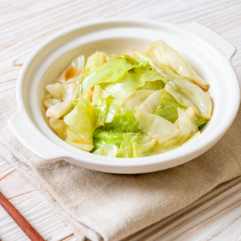
| Salt | 1500g |
|---|---|
| MSG | 300g |
| Red Pepper | 60g |
| Garlic | 100g |
| Lactic Acid (50%) | 200g |
| Malic Acid | 50g |
| Sodium Succinate | 100g |
| Sesame | 100g |
| Konbu | 100g |
| Glycine | 300g |
Syrup for Japanese pickles (TAKUAN) (100L)
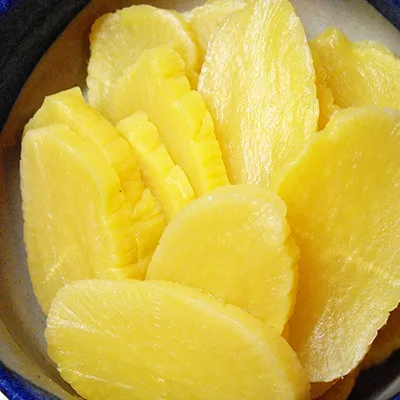
| Mono Sodium Glutamate | 300-400g |
|---|---|
| Sodium succinate | 30-50g |
| Fermentive seasoning | 500-800g |
| Japanese liquor | 300-600g |
| Citric acid | 300g |
| Sorbitol | 1,000-1,500g |
| Licorice extract | 20-40g |
| Glycine | 300-600g |
| Soybean flour | Suitable amount |
Pickled white radish (30kg)
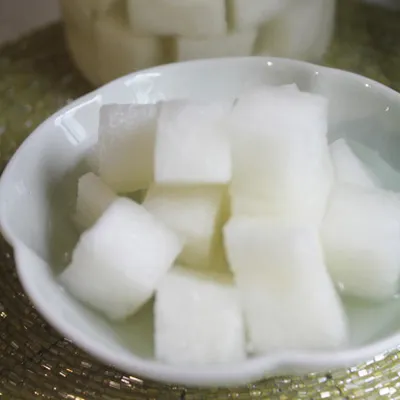
| Salt | 1500g |
|---|---|
| Mono Sodium Glumate | 300g |
| Red Pepper | 60g |
| Garlic | 100g |
| Lactic Acid | 200g |
| Malic Acid | 50g |
| Sodium Succinate | 100g |
| Carrot | 500g |
| Sesame | 100g |
| Konbu | 100g |
| Glycine | 300g |
Sake lees for pickled seafood
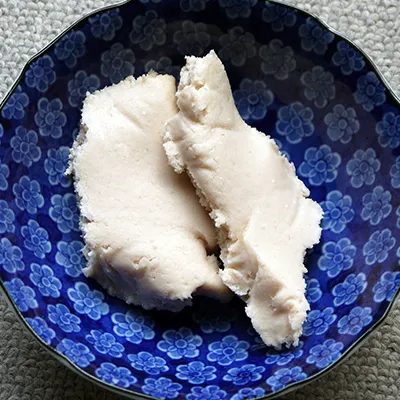
| Sake lees | 30kg |
|---|---|
| Sugar | 2kg |
| Thick malt syrup | 8kg |
| Salt | 5kg |
| Mono Sodium Glumate | 300g |
| Sorbic acid | 50g |
| Glycine | 200g |
| Sodium polyphosphate | 100g |
Kamaboko (100kg)
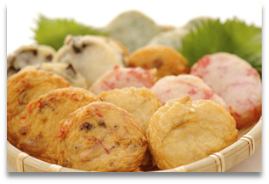
| Sugar | 1200g |
|---|---|
| Salt | 2800g |
| Starch | 8000g |
| White of egg | 5000g |
| Sweet Sake | 1L |
| Cold Water | 30L |
| MSG | 600g |
| Glycine | 500g |
| Sodium 5′-ribonucleotide | 35g |
| Natural amino acid | 100g |
Salted squids (Salt concentration 8%)
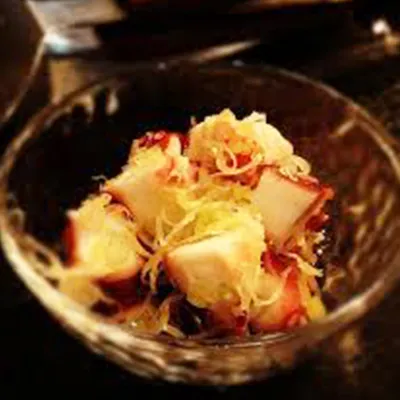
| Stripped squid | 100kg |
|---|---|
| Internal organ of squid | 15kg |
| Mixed sweetener | 120g |
| Mono Sodium Glutamate | 500g |
| Sodium Succinate | 50g |
| Glycine | 1kg |
Squid seasoning
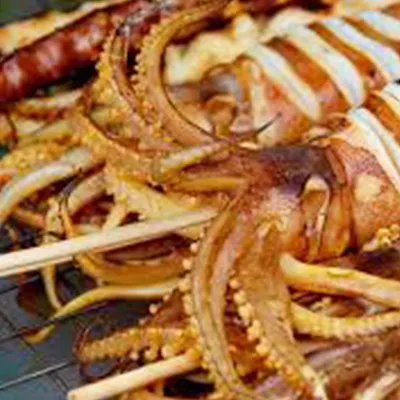
| Stripped squid | 100kg |
|---|---|
| Sodium5′- ribonucleotide | 200g |
| Natural amino acids | 100g |
| Sugar | 1kg |
| Red pepper | 50g |
| Glycine | 200g |
| Salt | 100g |
Chinese noodle (Raw)
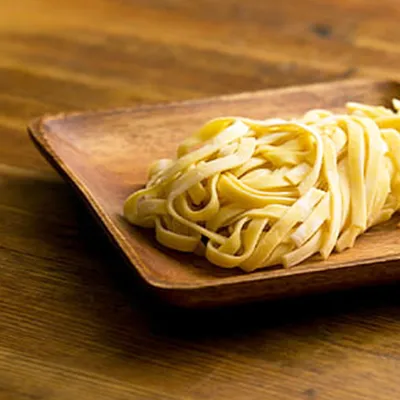
| Wheat flour | 25000g |
|---|---|
| Water | 8000g |
| Carbonate Water | 250g |
| Salt | 250g |
| Glycine | 750g |
Konbu (Japanese seaweed boiled down in soy sauce)
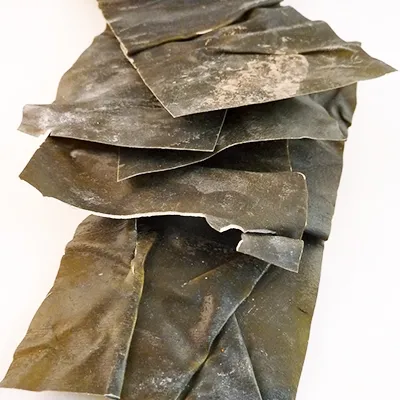
| Konbu | 15kg |
|---|---|
| H.V.P.(liquid) | 6L |
| Water | 14L |
| Soy Sauce | 4L |
| Salt | 920g |
| Caramel | 50g |
| Sugar | 2kg |
| Thick malt syrup | 400g |
| Sweet sake | 1.2L |
| Mono Sodium Glutamate | 100g |
| Sodium 5′- ribonucleotide | 6g |
| Glycine | 100g |
Soup powder for instant noodle

| Salt | 170g |
|---|---|
| Granulates | 100g |
| Mono Sodium Glutamate | 40g |
| Glycine | 20g |
| Sodium 5′-ribonucleotide | 1g |
| Garlic powder | 7g |
| Onion powder | 3.5g |
| Ginger powder | 5g |
| Pepper powder | 5g |
| Meat extract | 3kg |
| Soy sauce powder | 60g |
| Dried onion | 20g |
Pork Sausage

| Pork meat | 100kg |
|---|---|
| Lard | 25kg |
| Salt | 2.4kg |
| Sugar | 600g |
| Sodium phosphate | 250g |
| Sodium nitrite | 20g |
| Sodium ascorbate | 60g |
| Mono Sodium Glutamate | 130g |
| Xylose | 300g |
| Glycine | 600g |
| Ice | 31kg |
Crab stick (100kg)
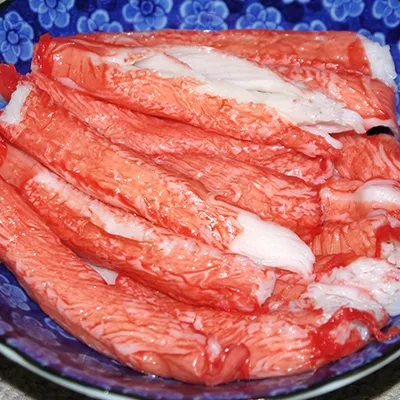
| Crab stick | 100kg |
|---|---|
| Salt | 2.5kg |
| Starch | 5-10kg |
| Seasoning | 2.5kg |
| Glycine | 0.5kg |
| Crab flavor | suitable amount |
| Crab extract | suitable amount |
Glycine Physical Properties and Specification
Resonac Glycine Physical Properties
| Chemical Formula: | NH2•CH2•COOH |
|---|---|
| Molecular Weight: | 75.07 |
| Appearance: | White Crystalline Powder |
| Melting Point (dec): | 232 ~ 236ºC |
| Solubility: | Easily soluble in water, slightly soluble in ethanol |
Resonac Glycine Specification
The following specification is based on the Japanese Standard of Food Additives.
| Assay: | 98.5 ~ 101.5% |
|---|---|
| State of Solution: | Transparent & Colourless |
| pH: | 5.5 ~ 7.0 |
| Chloride (as CI): | 0.021% max |
| Heavy Metals (as Pb): | 20ppm max |
| Arsenic (as As2O3): | 4.0ppm max |
| Loss on Drying: | 0.30% max |
| Residue on Ignition: | 0.10% max |
| Check Tests (2–different types) | Conforming |
For more details, please download catalog.
Please feel free to contact us for free sample or request for COA test report.
Packaging
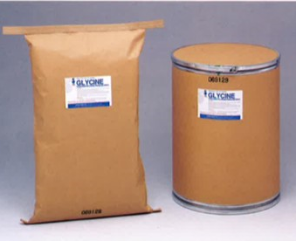 |
For shipping, we do provide both of FCL and LCL. Please feel free to enquire. |
Resonac Glycine Certification
| Kindly select on one of the following links below to start your download. |
Download PDF – FDA Certificate
Download PDF – FSSC22000 Certificate
Download PDF – COA Test Report
Download PDF – ISO9001 Certificate
Download PDF – Heavy Metal Test Report
Download PDF – HALAL Certificate
Download PDF – Kosher Certificate
